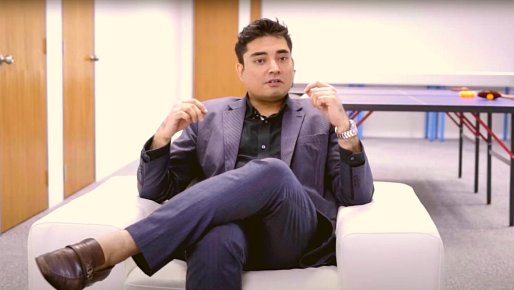The Memory Palace is one of the best memory techniques to memorise a large amount of information. It is not only practical but also fun to use — and not hard to learn at all.
The memory palace is a strategy of memory enhancement which uses visualisation of everyday spatial environments in order to improve the recall of information. The memory palace is also known as the memory journey, method of loci, or mind palace technique. This method is a mnemonic device utilised in ancient Roman and Greek rhetorical treatises. Many memory champions and experts use this technique to memorise and recall long digits and lists of words. One of those is Sancy Suraj.
Sancy Suraj is a memory athlete from Singapore. He represented his home country, Singapore, in the World Memory Championships in 2011 in Guangzhou, China. There he memorized, 176 abstract images in 15 minutes, 98 words in 15 minutes, 480 numbers in 60 minutes, 51 names, and faces in 15 minutes, 460 binary digits in 30 minutes. Sancy also held the world record for the longest colour sequence memorized in 2012. Memorized 160 colours in 5 minutes 20 seconds and recalled all colours in perfect sequence. Sancy also currently holds the Singapore record for pi memorization and recitation. Memorized & recalled 1505 digits in 30 mins in perfect sequence.
The things to be remembered in this mnemonic system are mentally associated with particular physical locations. The method relies on memorised spatial relationships to build an order and recollect memorial content. It is also known as the journey technique, used for storing long lists of related items, or the “Roman Room” method, which is most helpful for storing unrelated information.
The notion is to give your memories something to hang on to. We are rather terrible at remembering things, mainly when these memories float freely in our head. But our spatial memory is decent, and when we give our memories some required structure, we provide that missing order and context. Creating a multi-sensory experience in your head is the other piece of remembering.
“It is essential to try to remember images using as much of your sense as possible. The more associative ‘hooks’ a new piece of information has, the more securely it becomes embedded into the network of information you already know, and the more likely it is to remain in your memory. Strive to animate your image so it is in 3D and that you can watch it move. Try to think of what it might smell like or feel like and make it as vivid as you can,” Says Sancy

The Memory Palace has been used ever since ancient Rome and is liable for some unbelievable memory feats. Sancy Suraj used the memory palace to memorise 1505 digits of pi. Moreover, there are many other similar achievements attributed to memory athletes using the Memory Palace technique or adaptations of it. Even in fiction, there are numerous references to the memory palace technique. In Thomas Harris’ novel Hannibal, for instance, serial killer Hannibal Lecter uses Memory Palaces to store amazingly vivid memories of years of intricate patient records.
The Memory Palace method is exceedingly useful in all kinds of endeavours, such as learning a foreign language, memorising a presentation you are about to deliver, preparing for exams.




